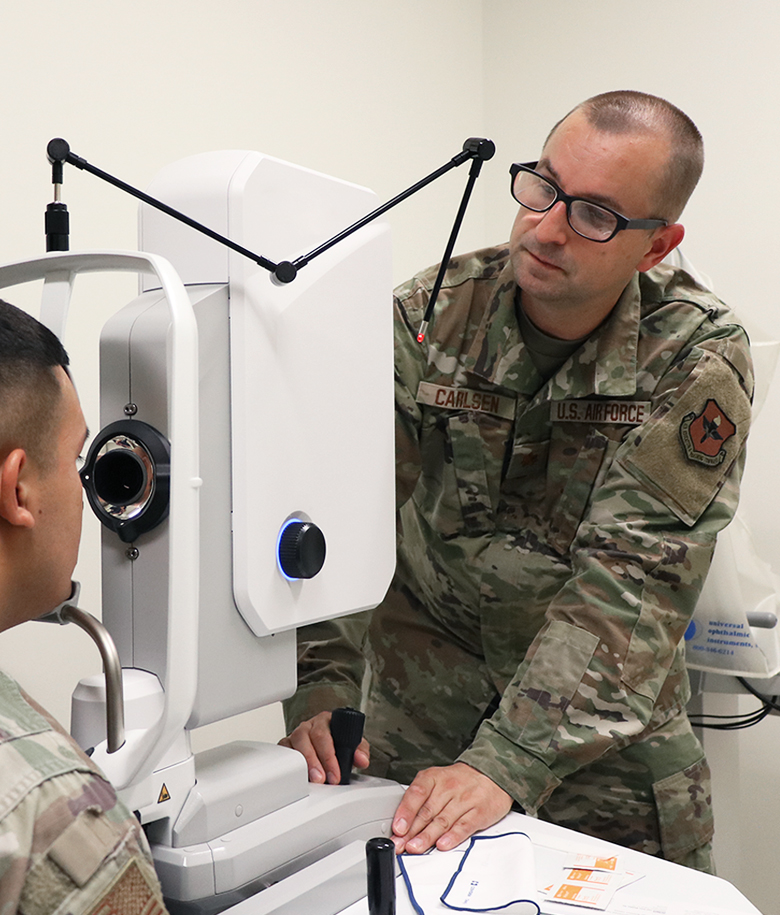Experience Personalized Care with Opticore Optometry in Chino
Wiki Article
Discovering the Latest Technical Improvements in Optometry and What They Mean for Eye Doctors
From the precision of Optical Comprehensibility Tomography to the nuanced insights offered by AI-driven diagnostic tools, these developments are establishing new requirements in patient evaluation and therapy. As these innovations permeate the method, optometrists are faced with the difficulty of welcoming these devices to enhance client results.Technologies in Diagnostic Tools
Progressing the field of optometry, developments in diagnostic tools have actually revolutionized the means eye care professionals analyze and identify ocular problems and visual impairments. The previous years has seen significant technical developments, enabling even more precise and extensive analyses.An additional trick advancement is the introduction of innovative corneal topography systems, which map the surface area curvature of the cornea with accuracy. These devices are specifically helpful for fitting get in touch with lenses and identifying corneal problems. Digital retinal imaging has changed typical ophthalmoscopy, using thorough, panoramic views of the retina that promote complete aesthetic examinations.
The advancement of wavefront aberrometry has actually also been essential, allowing the evaluation of refractive mistakes with unrivaled accuracy (Eye Doctor Optometrist). This technology helps in tailoring rehabilitative lenses and boosting medical outcomes for refractive surgical treatments. Collectively, these diagnostic developments encourage eye doctors to deliver premium individual treatment, making certain very early treatment and customized therapy approaches, inevitably boosting visual health end results
AI in Patient Administration
Building on the structure of advanced diagnostic devices, the unification of synthetic intelligence (AI) in client management represents a transformative jump for optometry. AI systems are progressively used to improve performance, accuracy, and customization in individual treatment.Additionally, AI-driven platforms assist in streamlined client interactions and management procedures. Automated organizing, digital examinations, and personalized follow-up strategies not just improve individual fulfillment yet also maximize time management for professionals. These systems can triage patients based on the necessity of their problems, ensuring that those in important demand receive punctual attention.
Moreover, AI improves decision-making by giving optometrists with evidence-based suggestions and treatment paths. By incorporating information from electronic health documents, AI devices supply understandings that educate scientific choices, lowering the threat of errors and enhancing individual end results. As AI remains to develop, its function in person management will likely increase, reshaping the landscape of optometric care.
Breakthroughs in Retinal Imaging
In the world of optometry, retinal imaging has seen amazing technical improvements that are enhancing diagnostic capabilities and client care. Innovations such as Optical Coherence Tomography (OCT) and fundus digital photography have actually revolutionized just how eye doctors assess the retina and envision. OCT, in certain, gives high-resolution, cross-sectional photos of the retina, permitting for the in-depth assessment of its layers. This ability is indispensable for very early detection and administration of conditions like glaucoma, diabetic retinopathy, and age-related macular deterioration.Improved imaging modalities like OCT angiography are further refining analysis precision. Optometrist Chino. Such improvements assist in the recognition of minute retinal modifications that could indicate illness progression.
Furthermore, improvements in synthetic knowledge are boosting retinal imaging by making it possible for automated evaluation of large datasets. These systems help optometrists in recognizing patterns indicative of pathology, consequently boosting analysis accuracy and performance. Jointly, these developments are transforming retinal imaging right into a cornerstone of contemporary eye care, boosting results and increasing therapeutic possibilities.
Teleoptometry's Expanding Function
Teleoptometry is significantly becoming a crucial element of eye care, driven by improvements in electronic interaction and diagnostic devices. This is particularly beneficial in rural and underserved areas my blog where accessibility to specialized eye care is typically restricted.The integration of synthetic intelligence (AI) more improves teleoptometry, enabling the evaluation of aesthetic data and aiding in the discovery of ocular conditions such as glaucoma and diabetic person retinopathy. AI-powered algorithms can swiftly analyze intricate imaging data, giving optometrists with important insights that strengthen scientific decision-making.
Furthermore, teleoptometry supports continuity of treatment through smooth combination with electronic wellness records (EHRs), permitting eye doctors to maintain comprehensive person histories. This ensures that clients obtain constant and tailored care also when speaking with various practitioners.
In spite of these advantages, challenges stay, consisting of guaranteeing information security and managing patient expectations. Nonetheless, teleoptometry represents a considerable stride in the direction of more obtainable, efficient, and patient-centered eye care. As modern technology advances, its duty is positioned to broaden better.

Future Fads in Eye Treatment
A myriad of cutting-edge patterns is established to improve the future of eye treatment, driven by technological developments and the advancing demands of individuals. One substantial pattern is the combination of expert system (AI) in diagnostics, which guarantees to improve the precision and helpful hints effectiveness of eye assessments. AI algorithms can evaluate large amounts of information from retinal pictures, possibly finding conditions like diabetic person retinopathy and glaucoma earlier than typical techniques.Additionally, tailored medicine is acquiring grip in optometry, with genetic testing informing tailored treatment strategies. This technique aims to maximize individual results by customizing treatments to individual hereditary profiles. Wearable innovation, such as wise contact lenses, is important site additionally imminent, providing real-time monitoring of intraocular stress or sugar degrees, therefore providing continual insights right into eye and systemic health.
The fostering of augmented fact (AR) and online reality (VIRTUAL REALITY) in training and client education and learning is an additional emerging pattern. These innovations offer immersive experiences that can enhance understanding and abilities both for patients and eye doctors. As these trends progress, eye doctors should stay abreast of technological advancements to offer sophisticated treatment, guaranteeing better patient results and satisfaction in the vibrant landscape of eye treatment.
Conclusion

Jointly, these analysis improvements equip optometrists to provide exceptional patient treatment, making sure early treatment and customized therapy methods, ultimately boosting visual health end results.

As these innovations proceed to evolve, optometrists have to adapt and integrate them right into practice, eventually maximizing workflow performance and raising the criterion of eye care delivered to individuals.
Report this wiki page